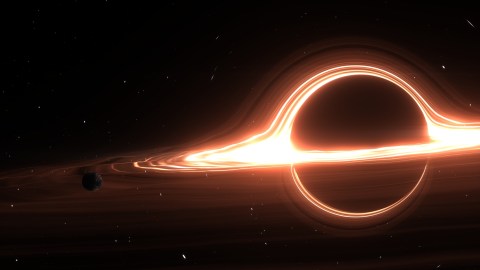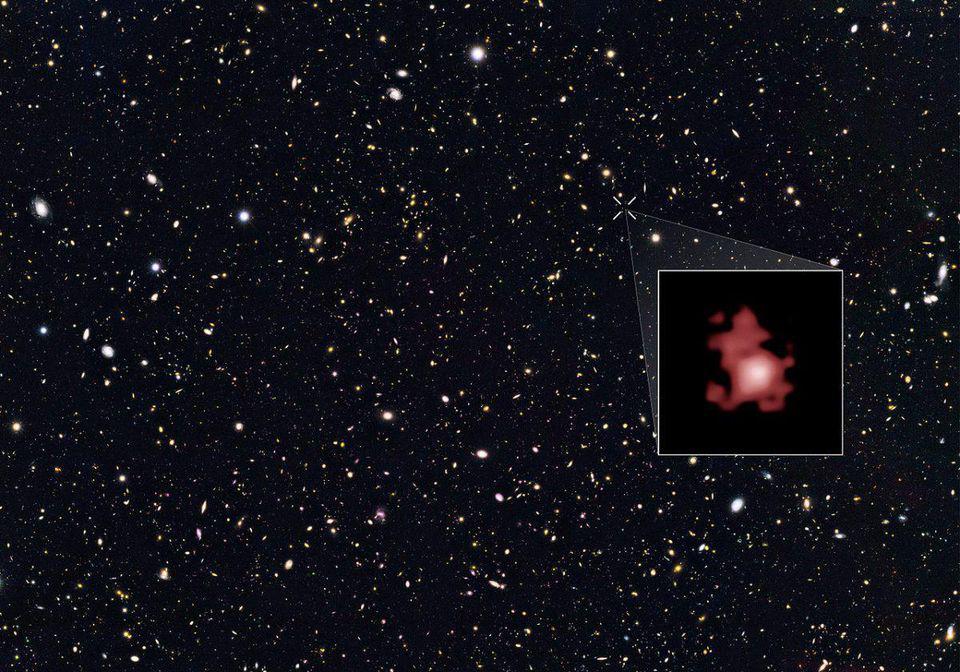Astronomers discover closest known black hole to Earth, Gaia BH1

- Gaia BH1 is the closest black hole to Earth that scientists have ever discovered.
- It is approximately three times closer to Earth than the previous record holder.
- By looking at the behavior of a star near the black hole, astronomers could determine the black hole was there, despite never seeing it directly.
No other cosmic phenomenon is perhaps quite as fascinating as black holes, locations where gravity is so strong that they twist the very nature of the space and time around them — so strongly that not even light can escape their pull. Black holes are ubiquitous throughout the Universe, with more than 100 million thought to exist in our Milky Way alone. They have been the subject of many science fiction thrillers, including the 2014 movie Interstellar, and they are often portrayed as dangerous monsters that consume everything around them. Luckily, black holes are thought to be “out there” and far away.
But a black hole recently discovered by astronomers is the closest one ever found, practically an astronomical neighbor. This black hole is called “Gaia BH1” and its discovery provides astronomers with a nearby laboratory with which they can better understand how black holes are made.
Gaia BH1: our astronomical neighbor
At a distance of 1,600 light years away, the black hole poses no danger to humanity; so, you can still sleep soundly at night. However, the story of how the black hole was discovered is an interesting one.
Black holes are the remnants of long-dead stars. Their name comes from the fact that not only do they emit no light, but they also absorb all light that falls into them. Because of this, they are invisible. “Black holes” is a literal name for these cosmic ninjas, which are undetectable in the way that we see other stars.
But that’s only true for isolated black holes. If black holes are surrounded by gas, or in the proximity of a nearby star, the hole’s gravity will pull in the gas. As it falls into the hole, it heats up to incredible temperatures. This glowing hot gas emits light that can be detected, an interstellar torch that is easily visible with the right scientific instruments. Perhaps ironically, “feeding” black holes, as they are called, are some of the brightest things in the cosmos. This is how most known black holes have been observed, although this is not the case of Gaia BH1.
Gaia BH1 was not directly observed, nor is it a feeding black hole. Instead, it was detected by seeing its effect on a second star in its planetary system. Perhaps half of planetary systems containing a sunlike star contain two stars orbiting one another. Gaia BH1 is an example of such a system, with the twist that one of the two stars is a black hole.
In December 2013, a Soyuz ST-B blasted from a launch facility in French Guiana carrying the Gaia telescope. Gaia’s mission is to map the location and motion of a billion nearby stars in the galaxy. It’s a staggeringly ambitious mission, and one that has been astonishingly successful, making many advances in astronomical knowledge.
However, relevant to Gaia BH1 was the observation of a particular star “jiggling” in place, as if it were orbiting another star — one scientists couldn’t see. This data piqued the curiosity of a group of astronomers, who turned the Gemini North telescope on Hawaii, one of the twin telescopes of the International Gemini Observatory to study the mysterious behavior. The group published a paper that not only confirmed the Gaia observation, but went on to demonstrate that what they were seeing was a sun-like star (class G), with a mass of 93% that of the Sun, orbiting a black hole with a mass of 9.62 ± 0.18 solar masses. The two stars orbit a location between them about twice a year.
Here’s how it works
Suppose you had a ball the size of a basketball, and assume that this ball weighs about as much as a small child. The ball glows red, but fairly dimly, so it doesn’t illuminate much around it, though it is easy to see in a dimly lit location. Now connect that ball to a strong cord. Finally, you get into an all-black burglar costume and bring everything into a dark room and turn off the lights.
Now comes the fun part. You grab the cord and start swinging it around like a hammer throw in the Olympics. What does an outsider see? They see the ball orbiting something invisible (you). And from the motion of the ball, they can infer that you are there.
And that’s the basic idea of how this measurement was achieved. By looking at the behavior of a star in the vicinity of the black hole, astronomers could determine the black hole was there, despite never seeing it directly.
So, what has this new observation taught us? Well, several things. While the black hole has a mass of about 10 times that of the Sun, when it was a star, its mass was more like 20 times that of the Sun. That means that the progenitor star of the black hole lived only a few million years. (In contrast, our own, much smaller, star has already lived 4.5 billion years and it’s only about halfway through its life expectancy.)
Before the progenitor star became a black hole, it first grew to a supergiant stage, which is when a star puffs out to big sizes. It’s as if our star became as big as the orbit of the Earth.
The progenitor star was so large that it entirely engulfed the star that still exists today. Then, after a brief stint as a supergiant, the progenitor star ran out of fuel and blew up in a supernova, leaving the black hole that astronomers discovered.
This is a curious thing, as astronomers would have expected the friction that the currently visible star would have experienced while embedded in the supergiant progenitor would have slowed the stars’ orbits down and brought them closer to one another than they see today. This will require astronomers to revisit their theories of how binary star systems like the one containing Gaia BH1 grow and evolve.
There’s so much we still don’t know about how star systems evolve over time, however discoveries like Gaia BH1 bring us closer and closer to understanding the Universe around us.





